#QR code vending machine
Explore tagged Tumblr posts
Text
#Tokyo-Osaka Bullet Train#Food Cart Service Ending#Shinkansen trains#Central Japan Railway#Reduced demand#Staffing challenges#Vending machines#QR code ordering#Green car passengers#Train dining evolution#tokyo#japan#investment#customer demand
0 notes
Text
hi would like to make this clear that this is gonna be an unhinged rant about my college classes.
For context, one of my classes is a semester-long group project (hell) and I pitched the idea of solar powered community fridges to my group and we rolled with it. Here's a post i made on it previously. We don't have to make the fridges themselves, basically just talk about the problem our concept addresses (food insecurity in this case) and how we think this concept would work and how, in a hypothetical reality where we made it real, we would test to see if it worked.
Anyways we had to post the rough draft of our presentations so people in other groups could see what we were doing and comment on them with their thoughts and all. Yknow. Classic 'college class discussion board have to reply to at least one project with quality feedback' stuff. And
Man.
I am so frustrated.
Highlights:
My group keeps insisting that we should have an app for the solar fridges. I don't know why they think app design needs to fit into community fridges but they put it into the draft posted to the forum.
In this case they proposed the app would be kinda like Instacart? Where people who want to donate to the fridges but don't have groceries on them and don't feel like going to get groceries can put in money and then people will then go buy the groceries to put in the fridge. Or use the funds to help with fridge maintenance. And the fridges would have 'QR codes, links, etc. to connect community members for the common cause of helping tackle food insecurity in the community.'
Lots of the comments were pretty good! People liked the idea. There were some concerns about insulation and keeping things cool with low energy cost (the program is online but the college itself is in Georgia USA so many people are in Georgia) but yknow.
But the frustrating part to me I guess is that a lot of people seem convinced that people would use the fridges 'unfairly' and that we'd need to find a way to restrict how much food people can take out or how many times they can use it or something. Which frankly in my opinion defeats the purpose of it being a community fridge. Here are some examples of things people have said so far (comments are due tomorrow evening but I'm mad now so I'm venting now):
One student said "How will you know if the pantry is being utilized fairly?" and "How will the app work? In a dream world, this might be a way to help with tracking and accountability. (Just a thought…) Maybe folks would need to sign up on the app, they get a code… and the fridge acts as a sort of vending machine to deliver what they need. This would give you data to measure success. :)"
Which. I just. This feels completely antithetical to the purpose of a community fridge??? Or a community anything???? Little free pantries and little free libraries don't operate on a 'you get a code to access it once' vending machine basis?? We even mentioned community farm stalls/community pantries in the draft write up! And showed examples!
Another student said "Great thoughts. I am concerned about one person taking all the food for themselves. It might be a great idea to have them in an enclosed area with access control through the app that would log and lock out people who are overusing the resource. Perhaps a barcode could be added to Apple Wallet to track each individual's arrival? Possibly having a mechanized lock and opening mechanism that would only allow each fridge to be open for a specific time before automatically closing and locking? Each scan would only allow access once each 24-48 hour period, preventing "password sharing.""
I cannot emphasize enough that this is the comment that has brought me here today because with all due respect what the flying fuck do you think is the point of a community fridge! I'm already prickly about the idea of limiting access to the fridge itself to only people with cellphones, but to this degree?! Like maybe its because I'm the one who came up with the concept and I care about terms like 'mutual aid' and 'community building' and 'judgement free accessibility to food' but have these people not heard of the concept of helping people?!?! With no strings attached?!? If someone takes all the contents of a community fridge or pantry--which, seriously, how likely is that--they're probably hungry and need it! The concept of putting community resources behind a lock and limiting accessibility is just repulsive to me???
Like someone else commented with this excellent point--"As several have addressed above, I am also wondering how would you monitor use? If you use the simplicity of the honor system, it could easily be taken advantage of. However, I feel like if you were to create some sort of access code, how is it to say that they people needing the use of the fridge will have access to the necessary technology to get the code? It's a tricky situation to think about." For the purposes of this hypothetical assignment where we'd need to track how many people are using the fridges? Yeah I guess we'd need to be able to track how many people use it and when. But in reality??? In real life reality where people are living and struggling and hungry??? I just don't really give a shit!! Helping five people is better than helping none, and locking access behind technology everyone pretends is universal but really isn't is not the way to help!
And of course one of my groupmates is already commenting on all these posts like 'oh! I really like the idea of restricting access to a code! :)' even when someone said 'hey my family struggled with food insecurity when I was a kid and I think this would be helpful but not if you could only access it with an app some of the most vulnerable citizens wouldn't be able to access it I wouldn't have been able to access it' my groupmate was still like 'oh but that wouldn't be a problem today now would it? :) Maybe we should make a way to get a code without downloading the app :)' like maybe there shouldn't be an access code in the first place?!?!
Like am I crazy or like. What the fuck. Again I am here so I don't blow up on a bunch of masters students in a discussion post but like UGH
"you gotta be able to gague if the people who're using it are the people who actually need it" food insecurity can look so many different ways for so many different reasons and you can't always judge by appearances and income levels who is struggling to feed themselves or their families!! There are people who have nice jobs who are struggling because they're caring for sick family members or kids or dealing with student loans or ANYTHING! There are people with nice clothes who are trying to decide between buying groceries and paying rent! There are people living in their cars or couch surfing looking for jobs who also happen to own an XBox or a Laptop!!! "Sorry you can't access the community fridge because you don't look poor and needy enough to me. but if you do, good news--you can only use it once every 48 hours so make it last!" Bullshit utter bullshit.
I talk to people in my life about things like community fridges and little free pantries and mutual aid and the like and people are always like 'ok but theres gotta be strings attatched' BUT ACTUALLY NO THERE DON'T GOTTA!!! Maybe we could change how we view our fellow human beings and stop assuming that everyone around you are greedy little demons looking to ruin everything good and that you are the only holy and righteous saint on the streets who understands the concept of 'community resources' and 'sharing' maybe??? It's like that post about community fruit trees where people are like 'oh but what if people steal all the fruit' like HELLO? how do you STEAL a PUBLICALLY ACCESSIBLE RESOURCE
I'm tired of this goddamn class I'm tired of this goddamn group project if anyone actually has the ability to make a solar powered community fridge you have to promise to keep it accessible and not put it behind locks and QR codes and limited access and facial tracking BS promise me promise me promise me
#out of queue#community fridge#i am going to go INSANE this class is driving me INSANE have yall not HEARD OF ACCESSIBILITY#AND COMMUNITY RESOURCES????#ani rambles#solarpunkani is solarpunkangy
632 notes
·
View notes
Text
AK Fest posting part 1
because i have so many pics to go through
There are two halls, the one with official/fan stuff and the actual theme park-ish one This post covers the first because image limit
The tickets were sold on Bilibili so I got them myself, you also have to register your name and ID and I got a VIP ticket so I got to sleep in little later (i think it was like 298 vs 598 RMB... you get more merch and 1 hour earlier entrance/shorter entry queue, but apparently so many people lined up early on the first day they let the floodgates loose at 8 plus and merch sold out by 0930 lmao) Idk how unfair it'd be (not sure how many tickets they sold per tier) but I kind of wish the VIP let you fastpass the attractions too kuxiao
I went on the 4th which was the second…? day and before I went in I had to scan a qrcode to basically upload a selfie lol (surprisingly didn't have to do this for the concert they just looked at my passport punched in the funny numbers on a device and let me through a manned door)
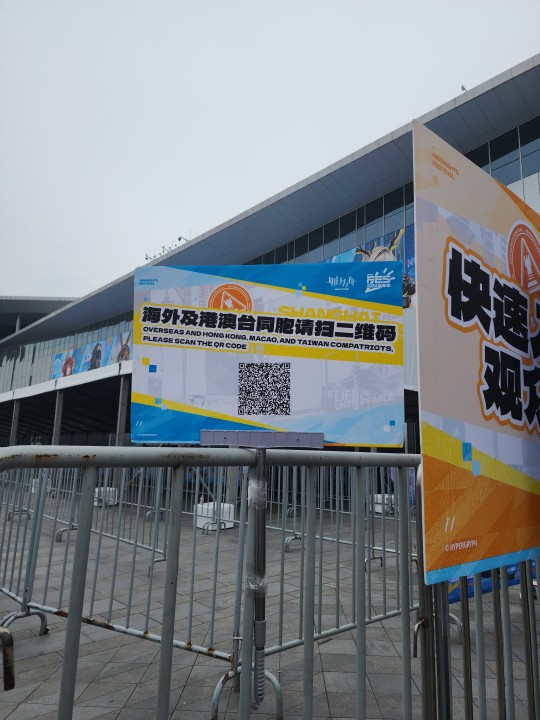

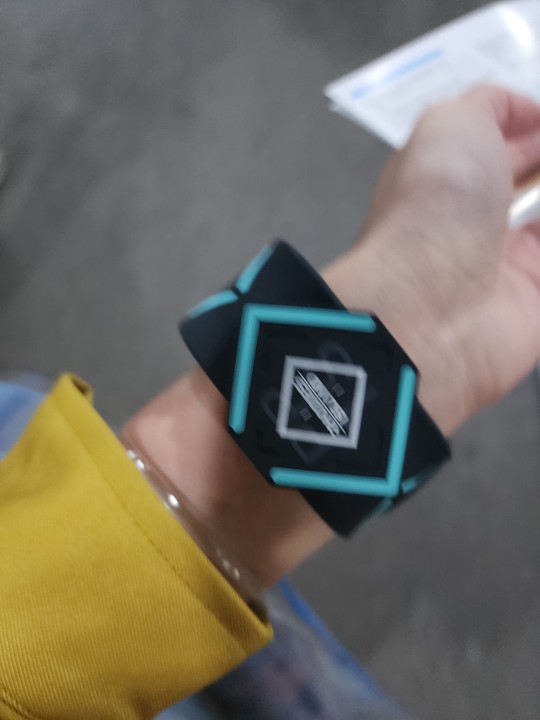
You get a totally not infection monitor to tap at every location, and if you scan the qr code on the underside it brings you to a miniapp on wechat that shows you your progress and queue estimates (there was also some quest thing that i forgor to do i think you get doctor stickers for it)
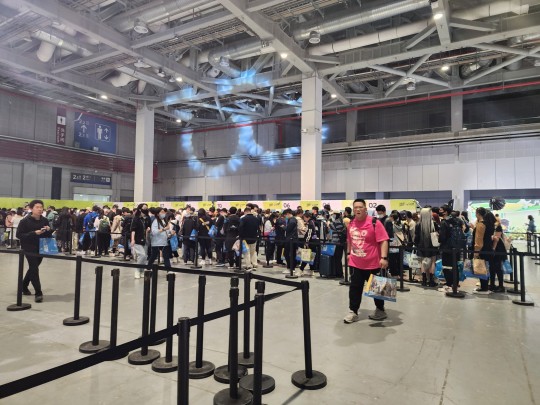
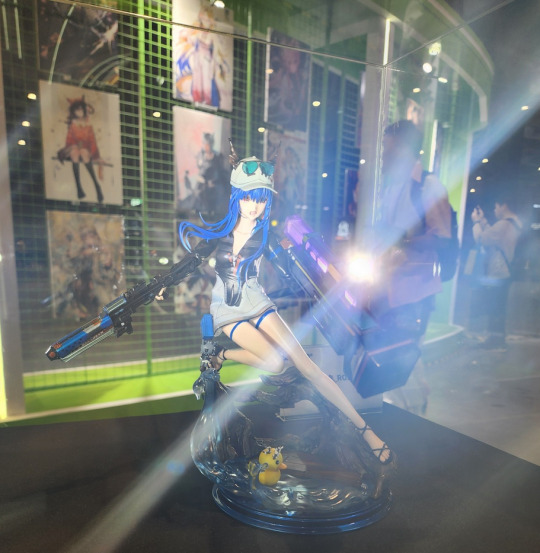

I headed here first because I wanted to pass some stuff to an oomf at the doujin area (first pic is the queue...) they invited a bunch of fanartists (that post regularly on skland? not sure) to table there kinda cool with a showcase of fanart
sorry it was impossible to take a nice pic of the chummer gk I TRIED
bought an eyja collab tea bottle cause it was from vending machines compared to the fresh drinks (i didnt get to try the chen one cause uh… i forgot basically the naixue near my hotel was always out of the drink set w/ the bonus merch)
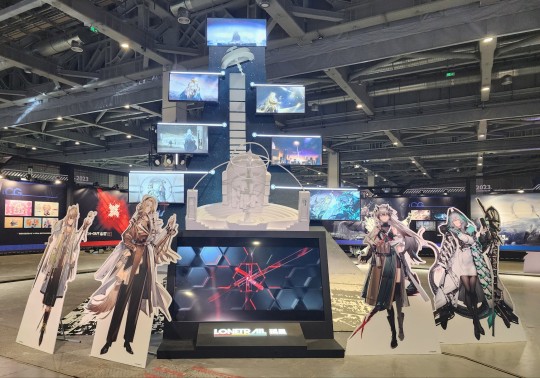
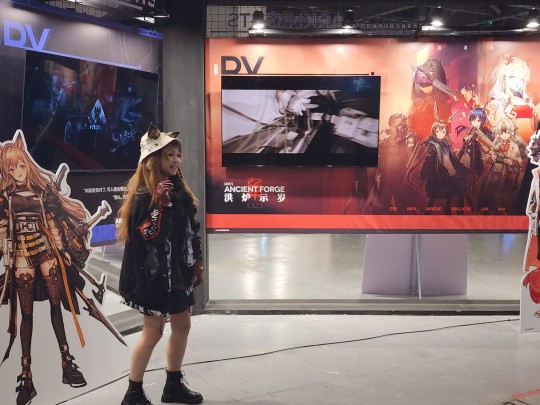
I'd post so many photos but the 10 image limit is kinda killing me over here... they had this huge area to look back at all the events basically


Area with production materials and some merch wips like I saw the justice knight figurine that I can't post because I already have 10 images on here ahhhhh WAIT I CAN JUST EMBED TWEETS ON HERE
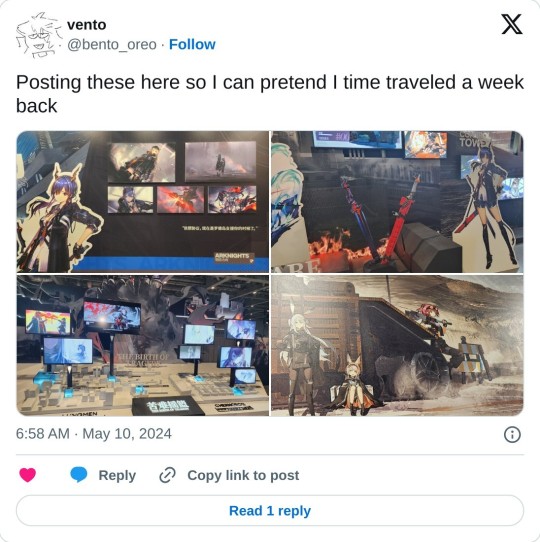


Old tweets about the Free Stage that day which was basically public karaoke guillotine
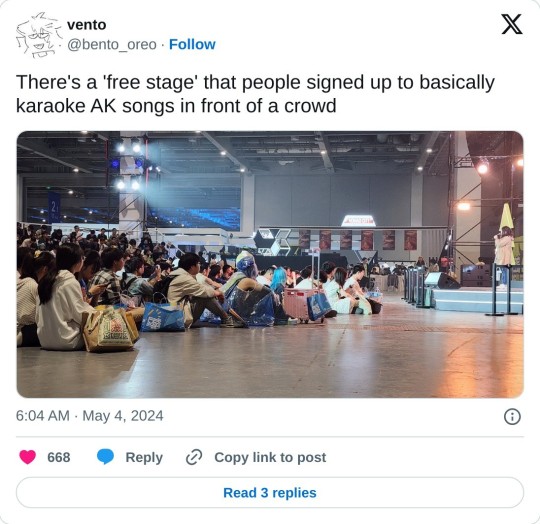
and the frostnova memorial

36 notes
·
View notes
Text


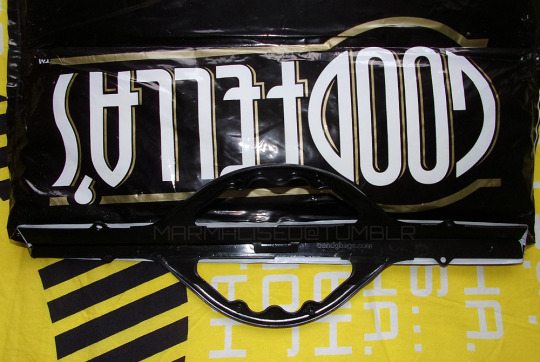



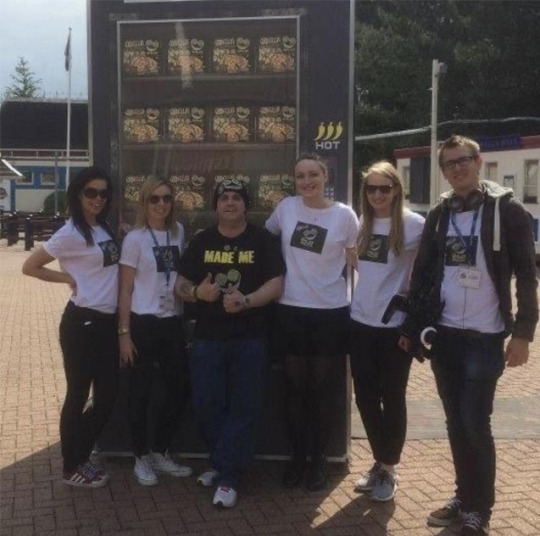
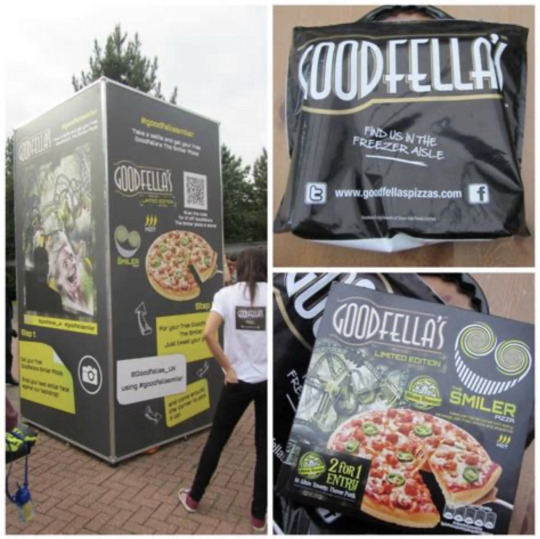
--------------------------------- THE SMILER PIZZA BAG --------------------------------- Original price: Free, given away as a promotion. Price I paid for mine: Won for £77 but total cost with postage was £81.20 via Ebay bidding. I however was originally not going to bid on this item as I knew it would go for something like £100+, however i chanced a bid and ended up winning the item in the end and while £80 is considered a lot of money to pay for a plastic empty pizza bag, this item is considered extremely rare and may only pop up now and again if you're lucky to come across one. As I collect merchandise for The Smiler I am lucky to have come into possession of one of these bags as there may only be 40 made out there in the world (This is according to Paul Jones who owns five of the bags in storage) - sources for this come from Paul Jones himself who used to be an avid collector of the older merchandise of The Smiler and a collector for Alton Towers merchandise. --------------------- Item information: Come the year 2014 a single vending machine appeared on the Alton Towers plaza in collaboration with GoodFella's to giveaway The Smiler branded pizza along with The Smiler branded pizza bags to carry the boxed pizza in for free. You were ordered by the information on the side of the vending machine to take a selfie (presumably outside the vending machine) to get your free GoodFella's pizza and then tweet your selfie to the twitter page @ GoodFellas_UK using the hashtag #goodfellasmiler to receive your free pizza around the corner (front of the vending machine). - A single person would stand inside the fake vending machine and then the person inside would dispense the pizza once a button was pressed by a member of the public who had just followed the steps above, allowing the said member of the public to collect the pizza in the branded bag once dispensed. Each person got a singular pizza each, however I do not know if you could have gone back and gotten multiple bags (personally I will assume that it was one bag per person but take that with a grain of salt as I am following information I have researched and inquired about to those who have experienced this promotion. - On the side of the vending machine there was also a QR code to scan where you could receive £1 off on The Smiler pizza in any of the stores selling the branded pizza. - The Smiler branded pizza was available in various supermarkets for a limited amount of time and offered a 2 for 1 promotion for entry into Alton Towers Resort. It was a deep pan pizza base topped with tomato sauce, cheese, spicy sausage, pan fried onions, and Jalapeños with a rating of three chili peppers to equal the pizza was quite hot. ------------------- The bag feels very durable and not like your average supermarket plastic bag that can easily tear. Inside the bag is white and features a slot to slide the pizza into or anything else you may want to place inside the bag. The bag also closes with a clasp and features a plastic black handle on the top. The Smiler logo is placed on the front bag along with the GoodFella's logo on the left hand side in the corner. The text under The Smiler logo say "THE SMILER PIZZA" "LIMITED EDITION" in capital letters featuring the font Orbitron commonly used for The Smiler marketing and ride as a whole.
------------------------------ Year promoted: 2014 only. ------------------------------ All information and photos given in this post have been through my own research, my own photos featuring the pizza bag, Paul Jones over on Facebook (TowersFanatic on other socials) for the item description (rewritten in my own words) and the last three photos featuring the pizza box, vending machine, and the group photo featuring himself and the Goodfella's promotion team. All credit goes to their respective owners and I have been given permission to repost the images above, I am simply documenting my merchandise collection and not using any of this for profit.
#alton towers#the smiler#the smiler merchive#smerchive#collection#the smiler merchandise#yes there was even a pizza branded with the smiler theme#yes i spent £80 on a bag#yes i am insane#yes my parents faces looked like that one video of the angry cat when i told them what i bought and how much#shout out to the singular person in the vending machine#the smizza#smoninoes#smizza hut?
27 notes
·
View notes
Text

Vending Machines: From Pokémon Collaborations to Disaster Preparedness
Location: Gumyoji, Minami Ward, Yokohama, Japan Timestamp: 17:45・2024/04/09
Fujifilm X100V with 5% diffusion filter ISO 400 for 1/250 sec. at ƒ/2 Classic Negative film simulation
Japan boasts an impressive array of vending machines, numbering around 2.6 million as of December 2023. In the span of the last four decades, I've witnessed significant shifts in this vending landscape. Notably, there has been a decline in machines vending alcohol and cigarettes, paralleled by a rise in machines offering both hot and cold beverages from a single unit. Among these innovations, my personal favorite is the advent of machines equipped with QR code scanning capabilities, allowing seamless payment through an app on my smartphone.
In my photo, two distinct elements immediately captured my eye: the presence of a Pokémon character adorning the vending machine, and upon closer inspection, the machine's disaster response capabilities.
The Ito En beverage company has partnered with the popular Pokémon Go game for a joint promotion of the game and Ito En drinks. Beyond its promotional features, this vending machine also serves a crucial role in the local community as a disaster response vending machine. In the event of a severe earthquake and subsequent power outage, it can dispense drinks at no cost, providing essential relief to those affected by the crisis.
While I sincerely hope to never have to utilize the services of a disaster response vending machine, it's reassuring to know that some large corporations are stepping up to make their services and products accessible to society during times of crisis.
Check out my full write-up (a concise 2-minute read), which includes a glossary and references for further reading (https://www.pix4japan.com/blog/20240409-vending).
#ストリートスナップ#横浜#弘明寺商店街#災害救援自販機#pix4japan#FujifilmX100V#streetphotography#Japan#Yokohama#vendingmachine
28 notes
·
View notes
Text
Scan the online brochures of companies who sell workplace monitoring tech and you’d think the average American worker was a renegade poised to take their employer down at the next opportunity. “Nearly half of US employees admit to time theft!” “Biometric readers for enhanced accuracy!” “Offer staff benefits in a controlled way with Vending Machine Access!”
A new wave of return-to-office mandates has arrived since the New Year, including at JP Morgan Chase, leading advertising agency WPP, and Amazon—not to mention President Trump’s late January directive to the heads of federal agencies to “terminate remote work arrangements and require employees to return to work in-person … on a full-time basis.” Five years on from the pandemic, when the world showed how effectively many roles could be performed remotely or flexibly, what’s caused the sudden change of heart?
“There’s two things happening,” says global industry analyst Josh Bersin, who is based in California. “The economy is actually slowing down, so companies are hiring less. So there is a trend toward productivity in general, and then AI has forced virtually every company to reallocate resources toward AI projects.
“The expectation amongst CEOs is that’s going to eliminate a lot of jobs. A lot of these back-to-work mandates are due to frustration that both of those initiatives are hard to measure or hard to do when we don’t know what people are doing at home.”
The question is, what exactly are we returning to?
Take any consumer tech buzzword of the 21st century and chances are it’s already being widely used across the US to monitor time, attendance and, in some cases, the productivity of workers, in sectors such as manufacturing, retail, and fast food chains: RFID badges, GPS time clock apps, NFC apps, QR code clocking-in, Apple Watch badges, and palm, face, eye, voice, and finger scanners. Biometric scanners have long been sold to companies as a way to avoid hourly workers “buddy punching” for each other at the start and end of shifts—so-called “time theft.” A return-to-office mandate and its enforcement opens the door for similar scenarios for salaried staff.
Track and Trace
The latest, deluxe end point of these time and attendance tchotchkes and apps is something like Austin-headquartered HID’s OmniKey platform. Designed for factories, hospitals, universities and offices, this is essentially an all-encompassing RFID log-in and security system for employees, via smart cards, smartphone wallets, and wearables. These will not only monitor turnstile entrances, exits, and floor access by way of elevators but also parking, the use of meeting rooms, the cafeteria, printers, lockers, and yes, vending machine access.
These technologies, and more sophisticated worker location- and behavior-tracking systems, are expanding from blue-collar jobs to pink-collar industries and even white-collar office settings. Depending on the survey, approximately 70 to 80 percent of large US employers now use some form of employee monitoring, and the likes of PwC have explicitly told workers that managers will be tracking their location to enforce a three-day office week policy.
“Several of these earlier technologies, like RFID sensors and low-tech barcode scanners, have been used in manufacturing, in warehouses, or in other settings for some time,” says Wolfie Christl, a researcher of workplace surveillance for Cracked Labs, a nonprofit based in Vienna, Austria. “We’re moving toward the use of all kinds of sensor data, and this kind of technology is certainly now moving into the offices. However, I think for many of these, it’s questionable whether they really make sense there.”
What’s new, at least to the recent pandemic age of hybrid working, is the extent to which workers can now be tracked inside office buildings. Cracked Labs published a frankly terrifying 25-page case study report in November 2024 showing how systems of wireless networking, motion sensors, and Bluetooth beacons, whether intentionally or as a byproduct of their capabilities, can provide “behavioral monitoring and profiling” in office settings.
The project breaks the tech down into two categories: The first is technology that tracks desk presence and room occupancy, and the second monitors the indoor location, movement, and behavior of the people working inside the building.
To start with desk and room occupancy, Spacewell offers a mix of motion sensors installed under desks, in ceilings, and at doorways in “office spaces” and heat sensors and low-resolution visual sensors to show which desks and rooms are being used. Both real-time and trend data are available to managers via its “live data floorplan,” and the sensors also capture temperature, environmental, light intensity, and humidity data.
The Swiss-headquartered Locatee, meanwhile, uses existing badge and device data via Wi-Fi and LAN to continuously monitor clocking in and clocking out, time spent by workers at desks and on specific floors, and the number of hours and days spent by employees at the office per week. While the software displays aggregate rather than individual personal employee data to company executives, the Cracked Labs report points out that Locatee offers a segmented team analytics report which “reveals data on small groups.”
As more companies return to the office, the interest in this idea of “optimized” working spaces is growing fast. According to S&S Insider’s early 2025 analysis, the connected office was worth $43 billion in 2023 and will grow to $122.5 billion by 2032. Alongside this, IndustryARC predicts there will be a $4.5 billion employee-monitoring-technology market, mostly in North America, by 2026—the only issue being that the crossover between the two is blurry at best.
At the end of January, Logitech showed off its millimeter-wave radar Spot sensors, which are designed to allow employers to monitor whether rooms are being used and which rooms in the building are used the most. A Logitech rep told The Verge that the peel-and-stick devices, which also monitor VOCs, temperature, and humidity, could theoretically estimate the general placement of people in a meeting room.
As Christl explains, because of the functionality that these types of sensor-based systems offer, there is the very real possibility of a creep from legitimate applications, such as managing energy use, worker health and safety, and ensuring sufficient office resources into more intrusive purposes.
“For me, the main issue is that if companies use highly sensitive data like tracking the location of employees’ devices and smartphones indoors or even use motion detectors indoors,” he says, “then there must be totally reliable safeguards that this data is not being used for any other purposes.”
Big Brother Is Watching
This warning becomes even more pressing where workers’ indoor location, movement, and behavior are concerned. Cisco’s Spaces cloud platform has digitized 11 billion square feet of enterprise locations, producing 24.7 trillion location data points. The Spaces system is used by more than 8,800 businesses worldwide and is deployed by the likes of InterContinental Hotels Group, WeWork, the NHS Foundation, and San Jose State University, according to Cisco’s website.
While it has applications for retailers, restaurants, hotels, and event venues, many of its features are designed to function in office environments, including meeting room management and occupancy monitoring. Spaces is designed as a comprehensive, all-seeing eye into how employees (and customers and visitors, depending on the setting) and their connected devices, equipment, or “assets” move through physical spaces.
Cisco has achieved this by using its existing wireless infrastructure and combining data from Wi-Fi access points with Bluetooth tracking. Spaces offers employers both real-time views and historical data dashboards. The use cases? Everything from meeting-room scheduling and optimizing cleaning schedules to more invasive dashboards on employees’ entry and exit times, the duration of staff workdays, visit durations by floor, and other “behavior metrics.” This includes those related to performance, a feature pitched at manufacturing sites.
Some of these analytics use aggregate data, but Cracked Labs details how Spaces goes beyond this into personal data, with device usernames and identifiers that make it possible to single out individuals. While the ability to protect privacy by using MAC randomization is there, Cisco emphasizes that this makes indoor movement analytics “unreliable” and other applications impossible—leaving companies to make that decision themselves.
Management even has the ability to send employees nudge-style alerts based on their location in the building. An IBM application, based on Cisco’s underlying technology, offers to spot anomalies in occupancy patterns and send notifications to workers or their managers based on what it finds. Cisco’s Spaces can also incorporate video footage from Cisco security cameras and WebEx video conferencing hardware into the overall system of indoor movement monitoring; another example of function creep from security to employee tracking in the workplace.
“Cisco is simply everywhere. As soon as employers start to repurpose data that is being collected from networking or IT infrastructure, this quickly becomes very dangerous, from my perspective.” says Christl. “With this kind of indoor location tracking technology based on its Wi-Fi networks, I think that a vendor as major as Cisco has a responsibility to ensure it doesn’t suggest or market solutions that are really irresponsible to employers.
“I would consider any productivity and performance tracking very problematic when based on this kind of intrusive behavioral data.” WIRED approached Cisco for comment but didn’t receive a response before publication.
Cisco isn't alone in this, though. Similar to Spaces, Juniper’s Mist offers an indoor tracking system that uses both Wi-Fi networks and Bluetooth beacons to locate people, connected devices, and Bluetooth tagged badges on a real-time map, with the option of up to 13 months of historical data on worker behavior.
Juniper’s offering, for workplaces including offices, hospitals, manufacturing sites, and retailers, is so precise that it is able to provide records of employees’ device names, together with the exact enter and exit times and duration of visits between “zones” in offices—including one labeled “break area/kitchen” in a demo. Yikes.
For each of these systems, a range of different applications is functionally possible, and some which raise labor-law concerns. “A worst-case scenario would be that management wants to fire someone and then starts looking into historical records trying to find some misconduct,” says Christl. "If it’s necessary to investigate employees, then there should be a procedure where, for example, a worker representative is looking into the fine-grained behavioral data together with management. This would be another safeguard to prevent misuse.”
Above and Beyond?
If warehouse-style tracking has the potential for management overkill in office settings, it makes even less sense in service and health care jobs, and American unions are now pushing for more access to data and quotas used in disciplinary action. Elizabeth Anderson, professor of public philosophy at the University of Michigan and the author of Private Government: How Employers Rule Our Lives, describes how black-box algorithm-driven management and monitoring affects not just the day-to-day of nursing staff but also their sense of work and value.
“Surveillance and this idea of time theft, it’s all connected to this idea of wasting time,” she explains. “Essentially all relational work is considered inefficient. In a memory care unit, for example, the system will say how long to give a patient breakfast, how many minutes to get them dressed, and so forth.
“Maybe an Alzheimer’s patient is frightened, so a nurse has to spend some time calming them down, or perhaps they have lost some ability overnight. That’s not one of the discrete physical tasks that can be measured. Most of the job is helping that person cope with declining faculties; it takes time for that, for people to read your emotions and respond appropriately. What you get is massive moral injury with this notion of efficiency.”
This kind of monitoring extends to service workers, including servers in restaurants and cleaning staff, according to a 2023 Cracked Labs’ report into retail and hospitality. Software developed by Oracle is used to, among other applications, rate and rank servers based on speed, sales, timekeeping around breaks, and how many tips they receive. Similar Oracle software that monitors mobile workers such as housekeepers and cleaners in hotels uses a timer for app-based micromanagement—for instance, “you have two minutes for this room, and there are four tasks.”
As Christl explains, this simply doesn’t work in practice. “People have to struggle to combine what they really do with this kind of rigid, digital system. And it’s not easy to standardize work like talking to patients and other kinds of affective work, like how friendly you are as a waiter. This is a major problem. These systems cannot represent the work that is being done accurately.”
But can knowledge work done in offices ever be effectively measured and assessed either? In an episode of his podcast in January, host Ezra Klein battled his own feelings about having many of his best creative ideas at a café down the street from where he lives rather than in The New York Times’ Manhattan offices. Anderson agrees that creativity often has to find its own path.
“Say there’s a webcam tracking your eyes to make sure you’re looking at the screen,” she says. “We know that daydreaming a little can actually help people come up with creative ideas. Just letting your mind wander is incredibly useful for productivity overall, but that requires some time looking around or out the window. The software connected to your camera is saying you’re off-duty—that you’re wasting time. Nobody’s mind can keep concentrated for the whole work day, but you don’t even want that from a productivity point of view.”
Even for roles where it might make more methodological sense to track discrete physical tasks, there can be negative consequences of nonstop monitoring. Anderson points to a scene in Erik Gandini’s 2023 documentary After Work that shows an Amazon delivery driver who is monitored, via camera, for their driving, delivery quotas, and even getting dinged for using Spotify in the van.
“It’s very tightly regulated and super, super intrusive, and it’s all based on distrust as the starting point,” she says. “What these tech bros don’t understand is that if you install surveillance technology, which is all about distrusting the workers, there is a deep feature of human psychology that is reciprocity. If you don’t trust me, I’m not going to trust you. You think an employee who doesn’t trust the boss is going to be working with the same enthusiasm? I don’t think so.”
Trust Issues
The fixes, then, might be in the leadership itself, not more data dashboards. “Our research shows that excessive monitoring in the workplace can damage trust, have a negative impact on morale, and cause stress and anxiety,” says Hayfa Mohdzaini, senior policy and practice adviser for technology at the CIPD, the UK’s professional body for HR, learning, and development. “Employers might achieve better productivity by investing in line manager training and ensuring employees feel supported with reasonable expectations around office attendance and manageable workloads.”
A 2023 Pew Research study found that 56 percent of US workers were opposed to the use of AI to keep track of when employees were at their desks, and 61 percent were against tracking employees’ movements while they work.
This dropped to just 51 percent of workers who were opposed to recording work done on company computers, through the use of a kind of corporate “spyware” often accepted by staff in the private sector. As Josh Bersin puts it, “Yes, the company can read your emails” with platforms such as Teramind, even including “sentiment analysis” of employee messages.
Snooping on files, emails, and digital chats takes on new significance when it comes to government workers, though. New reporting from WIRED, based on conversations with employees at 13 federal agencies, reveals the extent to Elon Musk’s DOGE team’s surveillance: software including Google’s Gemini AI chatbot, a Dynatrace extension, and security tool Splunk have been added to government computers in recent weeks, and some people have felt they can’t speak freely on recorded and transcribed Microsoft Teams calls. Various agencies already use Everfox software and Dtex’s Intercept system, which generates individual risk scores for workers based on websites and files accessed.
Alongside mass layoffs and furloughs over the past four weeks, the so-called Department of Government Efficiency has also, according to CBS News and NPR reports, gone into multiple agencies in February with the theater and bombast of full X-ray security screenings replacing entry badges at Washington, DC, headquarters. That’s alongside managers telling staff that their logging in and out of devices, swiping in and out of workspaces, and all of their digital work chats will be “closely monitored” going forward.
“Maybe they’re trying to make a big deal out of it to scare people right now,” says Bersin. “The federal government is using back-to-work as an excuse to lay off a bunch of people.”
DOGE staff have reportedly even added keylogger software to government computers to track everything employees type, with staff concerned that anyone using keywords related to progressive thinking or "disloyalty” to Trump could be targeted—not to mention the security risks it introduces for those working on sensitive projects. As one worker told NPR, it feels “Soviet-style” and “Orwellian” with “nonstop monitoring.” Anderson describes the overall DOGE playbook as a series of “deeply intrusive invasions of privacy.”
Alternate Realities
But what protections are out there for employees? Certain states, such as New York and Illinois, do offer strong privacy protections against, for example, unnecessary biometric tracking in the private sector, and California’s Consumer Privacy Act covers workers as well as consumers. Overall, though, the lack of federal-level labor law in this area makes the US something of an alternate reality to what is legal in the UK and Europe.
The Electronic Communications Privacy Act in the US allows employee monitoring for legitimate business reasons and with the worker’s consent. In Europe, Algorithm Watch has made country analyses for workplace surveillance in the UK, Italy, Sweden, and Poland. To take one high-profile example of the stark difference: In early 2024, Serco was ordered by the UK's privacy watchdog, the Information Commissioner’s Office (ICO), to stop using face recognition and fingerprint scanning systems, designed by Shopworks, to track the time and attendance of 2,000 staff across 38 leisure centers around the country. This new guidance led to more companies reviewing or cutting the technology altogether, including Virgin Active, which pulled similar biometric employee monitoring systems from 30-plus sites.
Despite a lack of comprehensive privacy rights in the US, though, worker protest, union organizing, and media coverage can provide a firewall against some office surveillance schemes. Unions such as the Service Employees International Union are pushing for laws to protect workers from black-box algorithms dictating the pace of output.
In December, Boeing scrapped a pilot of employee monitoring at offices in Missouri and Washington, which was based on a system of infrared motion sensors and VuSensor cameras installed in ceilings, made by Ohio-based Avuity. The U-turn came after a Boeing employee leaked an internal PowerPoint presentation on the occupancy- and headcount-tracking technology to The Seattle Times. In a matter of weeks, Boeing confirmed that managers would remove all the sensors that had been installed to date.
Under-desk sensors, in particular, have received high-profile backlash, perhaps because they are such an obvious piece of surveillance hardware rather than simply software designed to record work done on company machines. In the fall of 2022, students at Northeastern University hacked and removed under-desk sensors produced by EnOcean, offering “presence detection” and “people counting,” that had been installed in the school’s Interdisciplinary Science & Engineering Complex. The university provost eventually informed students that the department had planned to use the sensors with the Spaceti platform to optimize desk usage.
OccupEye (now owned by FM: Systems), another type of under-desk heat and motion sensor, received a similar reaction from staff at Barclays Bank and The Telegraph newspaper in London, with employees protesting and, in some cases, physically removing the devices that tracked the time they spent away from their desks.
Despite the fallout, Barclays later faced a $1.1 billion fine from the ICO when it was found to have deployed Sapience’s employee monitoring software in its offices, with the ability to single out and track individual employees. Perhaps unsurprisingly in the current climate, that same software company now offers “lightweight device-level technology” to monitor return-to-office policy compliance, with a dashboard breaking employee location down by office versus remote for specific departments and teams.
According to Elizabeth Anderson’s latest book Hijacked, while workplace surveillance culture and the obsession with measuring employee efficiency might feel relatively new, it can actually be traced back to the invention of the “work ethic” by the Puritans in the 16th and 17th centuries.
“They thought you should be working super hard; you shouldn’t be idling around when you should be in work,” she says. “You can see some elements there that can be developed into a pretty hostile stance toward workers. The Puritans were obsessed with not wasting time. It was about gaining assurance of salvation through your behavior. With the Industrial Revolution, the ‘no wasting time’ became a profit-maximizing strategy. Now you’re at work 24/7 because they can get you on email.”
Some key components of the original work ethic, though, have been skewed or lost over time. The Puritans also had strict constraints on what duties employers had toward their workers: paying a living wage and providing safe and healthy working conditions.
“You couldn’t just rule them tyrannically, or so they said. You had to treat them as your fellow Christians, with dignity and respect. In many ways the original work ethic was an ethic which uplifted workers.”
6 notes
·
View notes
Text
@kanabiveil
A snack was all Yagen wanted before his next shift—hospital vending machines had less variety and felt overpriced besides, especially the machines in the staff room—so he'd taken a quick trip to the corner 11-Seven to snatch up a couple of chocolate bars.
His usual brand had more decorations than usual—some sort of tie-in with a popular mobile game, "scan this wrapper to get a free limited-time monster for SpiraleGO!" blahblah. Yagen's not playing any games at the moment, so he just unwraps the wrapper and takes a big bite.
Crunch.
There's something inside the wrapper, too. Curious, Yagen unwraps it and sees a QR code next to the art of some cute little creature.
WINNER - ULTRA RARE FAIRY TYPE [NAME]!
Huh. Whatever that meant. Yagen looks at it a good while before his gaze drifts back to the chocolate shelves again, where another guy seems absorbed in browsing the special chocolate.
'Hey, you play this game?' His fingers hold up the wrapper and waves it enticingly.

'Want my wrapper?'
#kanabiveil#kanabiveil1#🌸〢i hope to get along with you (ic)#im playing off ur SpiraleGO canon from another thread lol
8 notes
·
View notes
Text
Day 4: Friday January 3rd, 2025 [Tokyo]
Breakfast: Coffee and a ham&cheese sandwhich
Lunch: McDonalds terriyaki chicken burger, fries & melon Fanta
Dinner: Sub-par kimchi noodles & share plates
Steps: 11, 038
We had such a great day today! Despite waking up with incredibly stiff and sore feet, we pushed through and decided to take it a bit easier, but still explore. Morgan found a sit-in coffee shop down the road so we had a lovely slow start to the day that was soundtracked by smooth jazz. We both had a slow-drip coffee and a ham and cheese toastie for breakfast and I managed to half-order in Japanese. We saw the QR code for the English menu after ordering - d’oh!
We headed in to Asakusa on the train at 11am. It took about 30 minutes and was quiet as it was after peak hour. It was about 7º and I was very glad to see that my new thermals worked a treat. We got off at Skytree Station to visit the top of our second sky-high tourist attraction, the Tokyo Skytree. We collected another Eki stamp and were then immediately bombarded by more shopping! Floors of it! We visited a Pokemon store to get a souvenir for our niece and then queued up for tickets. The next available time slot was 2:30pm so we had an hour to kill. We walked through a giant merch store called ‘Entertainment Store’ that had a bananas amount of merch from a million different franchises - there was no rhyme or reason to the displays. Nothing really stood out to us, but I did try my first ‘gashapon’ - a vending machine that dispenses toys in plastic balls, akin to Kinder Surprises in Australia. They are everywhere.
We walked past a McDonalds and decided it would be a quick and easy lunch before our booking. We were keen to try the Japanese menu so I ordered the Cheese Cheese Terriyaki Chicken Burger & Morgan ordered the Shrimp Filet-O. Both were… fine. The fries tasted the same and the drinks we ordered were way too sweet. I felt crook after this meal, so I don’t think we’ll be having anymore Maccas. We ate our lunch outside so we could see the tower and it was so intimidatingly large that it gave us tingles. It felt like our necks were almost back on a 90º angle in order to see the top.
At 2pm we lined up for the elevators and it quickly filled up behind us. The line seemed congested, but it moved in blocks as they piled people into the lifts. We moved so quickly and so high up that our ears popped multiple times which was weird. They also had a window in the roof so you could see how we were moving and it looked like something out of a sci-fi. The views from level 340 were sensational but it was a bit cloudy, so we couldn’t see Mt Fuji. Hopefully we get to see it next week when we head out that way. We collected the venue stamps (of course!), got a free souvenir picture and then took the elevator up to level 450 to see even further over Tokyo! There were less crowds higher up and it was a much more pleasant experience.
We left the Skytree at 3:30pm and caught the train to Asakusa to visit the Senso-Ji Temple. We were apprehensive about visiting as it was only an hour until sunset, but it ended up being an incredible time to visit.
As soon as we arrived in the district it was buzzing. There were food stalls set up, people everywhere and hoards heading towards the shrine. Again, it looked packed but moved quickly. The temple was HUGE and the architecture was beautiful. We bought some charms from vendors (matching ‘relationship good luck’ for ourselves and ‘healthy birth’ for our friends Emmet & Amelia who are pregnant) and lined up to show our respects. We threw money into the shrine, made a wish and then headed into the gardens. We bought a ‘goshuin’ to put in our stamp books. A goshuin is a hand-drawn seal given to visitors at shrines as proof of their visit. They cost ¥500 each and were such a lovely souvenir. I am very glad to have received one and hope we have the opportunity to collect more at shrines in Kyoto. We then paid ¥100 to get our fortunes told which was a cute New Year’s tradition. We walked around the gardens and bought some street food before walking around the surrounding streets of Asakusa which were alive with people eating, drinking and shopping. A very stereotypical ‘Japanese street’ that Morgan was very enamoured with.
We found an Izakaya for dinner and ordered a few things to share. The food was all average, but the hot sake was welcome as it was about 5º after the sun went down. We shared edamame, kimchi noodles, beef & rice and a cheesy Korean pancake.
After dinner we visited Don Quixote and Uniqlo again - we bought some cool patches for our feet to help with fatigue and Morgan wanted to get thermals after me bragging about how good mine were.
After a 15 minute walk and 30 minute train, we made a final stop at the Konbini for snacks and morning coffee and headed home to rest. This was an absolutely phenomenal day. We are having such a good trip so far!
2 notes
·
View notes
Text
Fuck digital grocery labels. "We'll cut 20% of our paper waste". No, you're replacing an easily recycled renewable resource with electronic waste that almost certainly will not be recycled.
"We'll be able to do in minutes what might take employees a week to do". No, it only takes a week because you don't hire enough staff to keep your store functioning properly and they're always being dragged away by customers who can't find anyone to help them because you've eliminated the customer service desk and you've instituted policies where the stocker has to physically walk the customer to the item instead of just telling them.
"You'll be able to scan a QR code to find out if a product has gluten in it" It takes five seconds to go to google, do a voice search for "Heinz Ketchup Gluten" and get an answer using tech we already have.
"Coca-Cola did surge pricing on their vending machines in the 1990s and it failed so store owners won't do surge pricing" No, people just bought non-vending machine coca-cola because they had the ability to go elsewhere and they knew the price was inflated because it's easy to monitor one machine's prices. If every grocery store is practicing surge pricing, there's no alternative, and we'll lose touch of what a "normal" price is because while it's possible to keep a single cola machine's prices in mind, it's impossible to commit every item in the store to memory and know when you're being price gouged. It's price fatigue and the corporations know this. "Surge pricing will work in reverse, if a bunch of milk is about to go bad, stores will discount the milk" No, stores are going to get lazier about buying excess product because they know that if the gamble of buying excess product doesn't lead to more sales, they can offload bad food onto customers who are just trying to catch a break, and in turn those customers will have to make a return trip for full-priced non-expired milk. That's not reducing waste, that's creating waste.
Also, you KNOW these motherfuckers are gonna price products real low sometimes to encourage bulk buying and then five minutes later when 20 people have 60 units in their cart but have not reached the checkout stands yet, they'll jack up the price suddenly, and exhausted consumers will have to remain vigilant at checkout to spot the difference and then have to go through the humiliation of asking the cashier to put those items back.
Grocery shopping is exhausting. It's a constant fight to not give into deceitful packaging, nonsensical '4 jumbo rolls = 10 regular rolls" label math, psychological pressure to buy buy buy, constant vigilance for bargains, the uptempo music trying to put you in a manic purchasing state...... They really are just trying to push even normal people into such exhaustion that they will pay extra just to fucking escape.
Fuck everything about this.
3 notes
·
View notes
Text
Thematic Headcanons. A series of subject-specific headcanons you can ask your favorite blog and muse.
hc + 🌘 for a night-themed headcanon // @stygia-n // accepting
Jade's most beloved activity was strolling around the school at night. The cool breeze and darkness resembling the depths of the Coral Sea energize him. Yet as it would seem, he wasn't the only student out and about when night fell.
He approaches Idia who stands in front of a vending machine, apparently at the moment of figuring out its mechanics, muttering something about how this is an obsolete piece of junk, that the world runs on QR codes and RFIDs now only plebs use cash. Jade chuckles softly just as he comes up to the Ignihyde Housewarden. He leans against the vending machine, quietly smiling down and he makes his presence known.
Idia looks up at him; any expression Idia initially had vanished like a whiff of smoke and is replaced by one as if he's watching a horror movie. Jade fingers his chin with a cynical smirk, wondering if he really is that terrifying or perhaps his reputation had been blown out of the water. "Come now, don't look like that. It's quite rare that I get to see you in person, after all." Something tells him that Idia wasn't looking forward to this confrontation as much as Jade had. Azul had instructed Jade to keep a tab on all of the students in the school, their social media, habits, lives, and etc. But Idia had been the sole individual he couldn't find anything about on the internet. That, alone, makes Idia interesting, makes him a challenge. "What did you want to purchase from the vending machine? Perhaps I could be of help."
#stygia n#𖦹 ⋆꙳ ⁄ ic.#𖦹 ⋆꙳ ⟡ ⁄ ᶜᴴ⁰⁰³ ᴛʜᴇ ᴍᴇʀᴄʜᴀɴᴛ ꜰʀᴏᴍ ᴛʜᴇ ᴅᴇᴘᴛʜꜱ *:・ MAIN VERSE.#// their version of 'let me buy you a drink'#// except its not from a bar; its a vending machine that costs maybe $2
3 notes
·
View notes
Text
It would be nice if local pharmacies and other stores had 3D printers that operated like vending machines where you could print out useful and inexpensive pre-programmed items (kitchenware, tools, small toys, etc.) as well as things that you design and bring in. (You could transfer your design with a tablet or phone using Bluetooth, an SD card, a USB 3 I/O cord, or maybe even a QR code for the simplest projects. Also, your design is deleted from the printer immediately once you're finished.)
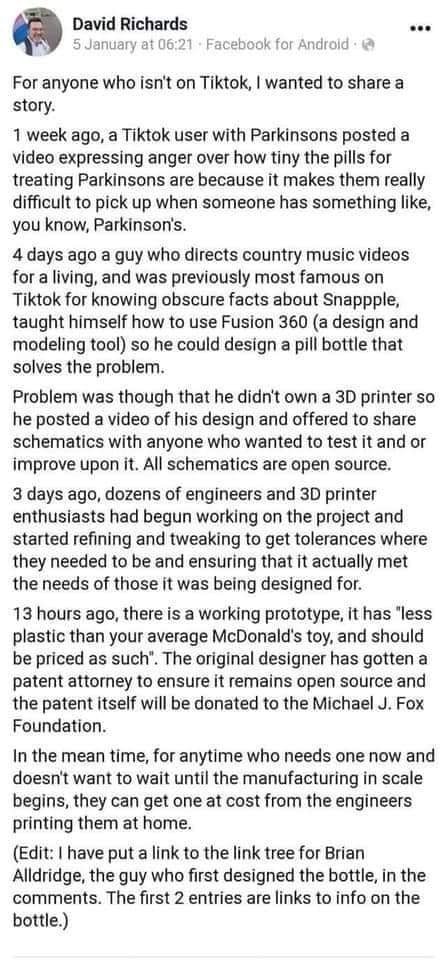
188K notes
·
View notes
Text
Digital Dreamscape in Shibuya
An ultra-realistic, high-resolution night photo taken on a crowded street in Shibuya, Tokyo. Neon signs reflect off wet pavement, vending machines glow softly, and a crosswalk is filled with people moving in all directions — students, office workers, couples, tourists — dressed in jackets and coats, umbrellas in hand. The city pulses with light and motion. But in this surreal twist, each person has a glowing screen where their face should be. The screens show blurred lines of text, QR codes, maps, or live stock graphs — unique for each individual. The screens glow softly, reflecting onto their jackets and nearby umbrellas. The rest of their bodies are completely realistic, with natural posture, movement, and clothing detail. Around them: storefronts with kanji signage, LED billboards, bicycles, and taxis. The lighting is cinematic — neon blue, red, and white mixed with light rain and reflections. Despite the crowd, there’s a sense of eerie isolation. The mood is futuristic, melancholic, and quietly surreal — like a dream of digital overload rendered with photojournalistic clarity.
0 notes
Text
Digital Dreamscape in Shibuya
An ultra-realistic, high-resolution night photo taken on a crowded street in Shibuya, Tokyo. Neon signs reflect off wet pavement, vending machines glow softly, and a crosswalk is filled with people moving in all directions — students, office workers, couples, tourists — dressed in jackets and coats, umbrellas in hand. The city pulses with light and motion. But in this surreal twist, each person has a glowing screen where their face should be. The screens show blurred lines of text, QR codes, maps, or live stock graphs — unique for each individual. The screens glow softly, reflecting onto their jackets and nearby umbrellas. The rest of their bodies are completely realistic, with natural posture, movement, and clothing detail. Around them: storefronts with kanji signage, LED billboards, bicycles, and taxis. The lighting is cinematic — neon blue, red, and white mixed with light rain and reflections. Despite the crowd, there’s a sense of eerie isolation. The mood is futuristic, melancholic, and quietly surreal — like a dream of digital overload rendered with photojournalistic clarity.
0 notes
Text
Market Report on Retail Vending Machine: Understanding Size, Share, Growth Trajectories
The global retail vending machine market size is expected to reach USD 89.27 billion by 2030, registering a CAGR of 3.7% from 2025 to 2030, according to a new report by Grand View Research, Inc. The industry growth can also be attributed to the ability of these machines to deliver goods quickly, making it an extremely convenient option for consumers. Vending machine sales appear to be a potential means of food and beverage distribution, as these machines can sell various consumables, such as cigarettes and lottery tickets, in addition to snacks and beverages. As a result, vending machine operators can create high revenue by strategically installing them in corporate buildings, schools, malls, train stations, and airports, among other locations.
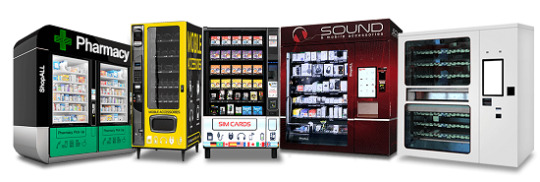
In recent years, IoT technology has provided vending machine operators with the opportunity to improve their businesses by tracking products and assessing what is popular in machines. By tracking stocks through connected devices, vending machine operators can be instantly alerted about low stock levels in their vending machines, which may ultimately reduce expenses and improve customer service. According to Sigfox, the noticeable use of IoT in the vending industry is in plug-and-play smart button devices that attach to machines, enabling individuals to contact facility management instantly. By payment mode, cashless payment technology is expected to witness tremendous growth as it goes hand in hand with payment security.
Although data breaches & scams have impeded the convenience of using a debit/credit card, vending machine operators are working with certain financial institutions to implement the strictest security measures to protect both customers and operators. Operators are adopting various strategies to maximize profit by being at the right location with the right products, sourcing products in bulk, investing in intelligent vending machines to gain consumer insights, and other ways. For instance, hot food and sandwich vending machines may do well in business environments, universities, and schools, while, in most public locations, hot drinks like coffee, tea, and hot chocolate have high demand. Industry players face intense competition from each other, as some of them operate at several locations and have large customer bases. The presence of many small-scale players is also leading to increased competition.
For More Details or Sample Copy please visit link @: Retail Vending Machine Market Report
Retail Vending Machine Market Report Highlights
The beverage segment led the market with the largest revenue share of 44.78% in 2024, owing to the rising consumer preference for convenient, on-the-go refreshment options and advancements in vending technology.
Based on location, the manufacturing segment led the market with the largest revenue share of 35.47% in 2024.
Based on payment mode, the cashless segment led the market with the largest revenue share of 75.41% in 2024. As consumers shift toward cashless transactions, vending machine operators are adapting by integrating mobile payments, credit/debit card readers, and QR code payment systems.
Asia Pacific dominated the retail vending machine market with the largest revenue share of 56.78% in 2024.
#RetailVendingMachines#VendingMachineMarket#AutomatedRetail#SmartVending#IoTVendingMachines#AIInRetail#CashlessVending#TouchlessVending#ConnectedVending#FoodAndBeverageVending#NonFoodVending
0 notes
Text
Socialists Want An Anti-Trump Pope

THE NEXT POPE: APOCALYPSE MITRE EDITION
By SpinTaxi’s Vatican Fashion Correspondent and a Dairy Farmer with a Latin Dictionary
The Conclave Hunger Games
Vatican Declares “Last Pope Standing” Contest Move over, March Madness. Welcome to April Absurdity, brought to you by the College of Cardinals — now airing live on Pay-Per-Pope. As Pope Francis’ holy Fitbit hit 0%, the Vatican announced that the successor would be chosen through an elite conclave showdown known as The Papal Brawl: Smells and Bells Edition. Bishops across the globe were summoned like Hogwarts students receiving owl-grams. White smoke? Forget it. This year, the next Pope will be announced via a laser drone spelling “SANTO!” over St. Peter’s Basilica. “When Newsmax says the Church is in crisis, I assume they mean they couldn’t find gluten-free hosts.” —Larry David And what a field of contestants! Cardinal Raymond Burke entered the Sistine Chapel with a MAGA stole and an exorcism kit. Cardinal Matteo Zuppi brought a Pride flag and a solar-powered confessional booth. Cardinal Willem Eijk flew in from the Netherlands on a bicycle powered by righteous indignation. What the Funny People Are Saying: “So the next Pope might be a guy who hates modernism… selected using an online ranked-choice voting app? That’s like choosing a caveman by Tinder swipe.”—Jerry Seinfeld
FRANCIS’ FINAL HOMILY: “PEACE, LOVE, AND WHATEVER YOU WANT, REALLY”
Pope Francis’ final mass featured drones dropping vegan communion wafers over the crowd, a sign of the Church’s pivot toward progressive grocery stores and celestial ambivalence. His homily ended not with “Amen,” but a TED Talk playlist and a QR code linking to “The Gospel According to Greta Thunberg.” Traditional Catholics wept. Liberals applauded. And somewhere in the crowd, Joe Biden tried to genuflect, fell, and accidentally consecrated a hot dog. Evidence of Collapse: A leaked Gallup-Vatican-YouGov poll revealed: 64% of Catholics think “doctrine” is a type of pasta. 32% believe the Pope lives in Reno. 7% believe they are the Pope.
The Cardinals: A Field Guide to Red-Hatted Gladiators
CARDINAL PETER ERDO (Hungary)Described as “the theological Mike Tyson,” Erdo pledges to return the Church to Latin, leprosy, and leather sandals. He once punched a vending machine for selling “gender-neutral water.” CARDINAL PIETRO PAROLIN (Italy)Francis’ spiritual nephew and the Vatican’s secretary of state. Parolin’s résumé includes organizing cocktail parties for UN diplomats and writing encyclicals that double as ESG reports. CARDINAL RAYMOND BURKE (USA)Wears red like a bull charges it. Thinks climate change is a Jesuit conspiracy, opposes liturgical dancing, and once called jazz music a “gateway drug to Lutheranism.” CARDINAL MATTEO ZUPPI (Italy)Popular with artists, anarchists, and archangels. Zuppi’s platform includes giving voting rights to baptized houseplants and renaming “The Our Father” as “The Parent Who Be.” CARDINAL WILLEM EIJK (Netherlands)Believes secularism is a virus and baptism is the vaccine. Known for issuing 300-word sermons containing only one verb: “repent.”
BREAKING: JESUS REFUSES TO COMMENT
When asked who should lead the Church, sources close to Jesus said, “He’s golfing.”
TRUMP’S CABINET: THE RESURRECTION SQUAD
Meanwhile, in a parallel but equally incense-scented dimension, Donald J. Trump announced his 2025 inner circle in a ceremony that began with a bald eagle landing on Steve Bannon’s shoulder and ended with the choir from Mar-a-Lago Christian Academy performing “Hail to the Chief (Remastered by Kid Rock).” Inside Trump’s “Team Like No Other”: Secretary of Defense: Mike TysonWeaponized aggression. Enlists the Space Force to patrol Twitter. Secretary of Faith & Fisticuffs: Pastor Greg LockeCombines snake-handling theology with mixed martial arts diplomacy. Press Secretary: Roseanne BarrEvery briefing ends in a Bible quote, a lawsuit, and a meatloaf recipe. Head of the Environmental Protection Disarmament Agency: Joe RoganPlans to flood the Grand Canyon with alpha brain powder and ban trees that don’t believe in freedom. Surgeon General: Ben ShapiroWill speak faster than you can ask, “Is that even medical advice?”
GEN Z: GAY, GODLESS, AND GLUED TO THEIR PHONES?
Newsmax reports that over 20% of Gen Z identifies as LGBTQ, prompting conservative media to declare it a “national emergency” and propose funding for “Heterosexual Re-Education Yoga.” Old folks in Florida have reportedly started spelling out “LOLGBTQ” on bingo cards, while schools consider installing gender-neutral prayer closets. Social Science Data (Cited Nowhere): 47% of Gen Z think “communion” is a dating app. 18% believe Noah's Ark was a climate change metaphor. 12% would swipe right on Satan “just to see what happens.”
CHINA BUYS KANSAS; OFFERS FREE RICE TO FARMERS
In an unsettling twist, Beijing now owns 36% of Kansas. Locals say tractors have been replaced with rickshaws and barbecue joints with wet markets. Kansas Governor Buck Gritstone addressed the situation by saying, “We welcome our new economic overlords. Also, who took my cows?” Fox News Coverage:Tucker Carlson’s hologram asked if Xi Jinping is trying to turn America into one large Mandarin lesson. What the Funny People Are Saying: “I bought a farm in Kansas and accidentally joined the Communist Party. Now I’m expected to learn calligraphy and bow to my corn.”—Ron White
ELON MUSK: CLEANSING THE SWAMP WITH ROCKET FLAMES
Elon Musk has declared war on the administrative state. His latest X post reads:“AI-run Congress. No pensions. No pants. Let’s go.” His innovations include: Self-driving subpoenas Neuralink-enabled lie detectors PayPal for papal donations Musk’s tunnel-boring machine has accidentally resurfaced beneath the Library of Congress. It was immediately sold to Netflix as a series titled “Drain the Swamp: The Burrowing Begins.”
FOX NEWS: GEN Z EDITION
Fox’s new hosts include: Tucker Carlson, Jr.: A synthetic AI clone who speaks only in ironic Latin. Candace Owens: Returns with a show called “Woke Wreckage Wednesday.” Kid Trump: Barron Trump’s TikTok persona with 8 million followers and a gold-plated teleprompter.
THE NEXT POPE VS. THE NEXT TRUMP: WHO GETS THE NUKES?
In an intercontinental game of chess, it remains unclear who will shape the soul of civilization: the successor to Pope Francis or the guy tweeting Bible verses from a tanning bed. One will command 1.3 billion Catholics.The other already has the nuclear codes, a devotional app, and a secret bunker filled with copies of Art of the Deal: Extended Gospels Edition.
SATIRICAL SOURCES:
The Pope’s New Mitre Includes 5G and a Juice Cleanse Protocol Trump Names Jesus “White House Chaplain,” Jesus Politely Declines Kansas Declares State of Emergency After Mandarin Replaces English on Stop Signs Elon Musk Installs Mars Rover in Oval Office, Calls It “Vice President” Gen Z Forms New Religious Movement Based on Astrology, Memes, and Vibing Fox News Launches New Segment: “Woke or Possessed?” Evangelical Army Baptizes Entire Lake Erie in Pre-emptive Strike Against Satan
COMEDIAN LINES FOR YOUR SOUL:
“The next Pope should be picked by spinning the Rosary Wheel and yelling ‘Habemus Bingo!’”—Billy Crystal “Trump’s inner circle has more drama than the Kardashians, and less foreign policy experience.”—Sarah Silverman “If China owns Kansas, can they take Nebraska as a free gift with purchase?”—Chris Rock “Gen Z thinks Lent is when you borrow things.”—Amy Schumer “Elon Musk is trying to replace Congress with ChatGPT and Mars bars.”—Trevor Noah “Fox News calling itself ‘next-gen’ is like your grandpa buying a hoverboard and calling it a Corvette.”—Dave Chappelle
FINAL THOUGHTS: THE HOLY INFLUENCER WARS
Whether it’s Pope TikTokus I or President Trumpus Maximus, we are entering an age where leadership will be livestreamed, salvation monetized, and dogma sponsored by pharmaceutical ads. Stay tuned. Or don’t. Either way, your subscription renews automatically. Auf Wiedersehen. Read the full article
0 notes
Text
Addsoft Technologies Ticket Vending Machines: Transforming the Future of Public Transportation
In an era where urbanization and mobility are accelerating, the need for efficient, accessible, and intelligent public transportation systems has never been greater. At the heart of this transformation is smart technology—and Addsoft Technologies' Ticket Vending Machines (TVMs) are helping to lead the way.

A New Era of Passenger Convenience
Gone are the days of long ticket queues and manual transactions. Addsoft Technologies’ Automatic Ticket Vending Machines bring automation, speed, and ease of access to passengers, redefining the ticketing experience across railway stations, bus terminals, metro stations, and more.
By empowering passengers to purchase, renew, or upgrade tickets independently, Addsoft’s TVMs enhance operational efficiency and significantly improve customer satisfaction.
Key Innovations Behind Addsoft’s Ticket Vending Machines
Seamless User Experience
Addsoft’s TVMs feature intuitive touchscreen interfaces, multilingual support, and visual guidance, ensuring a frictionless experience for users of all ages and backgrounds.
Flexible Payment Options
Passengers can pay using cash, credit/debit cards, UPI, QR codes, and mobile wallets—making transactions quicker and more secure.
Real-Time Integration
The machines are connected to central databases, providing real-time ticket availability, fare updates, and transaction records, ensuring accuracy and reliability at all times.
Robust and Secure Design
Engineered for high-traffic environments, Addsoft’s TVMs offer rugged construction, tamper-proof technology, and enhanced data encryption to ensure safe and uninterrupted operations.
Contactless and COVID-Safe Features
With the rise of health and safety concerns, Addsoft’s TVMs incorporate contactless ticketing options, minimizing touchpoints and enhancing commuter safety.
The Impact on Public Transportation
Implementing Addsoft Technologies' Ticket Vending Machines leads to:
• Reduced Waiting Times: Faster processing at stations helps manage heavy crowds during peak hours.
• Higher Operational Efficiency: Freeing staff from manual ticketing duties allows redeployment to customer service roles.
• Better Revenue Management: Automated ticket sales offer better tracking, reporting, and revenue protection.
• Increased Accessibility: Multilingual and intuitive interfaces make transportation services inclusive for tourists, elderly citizens, and those unfamiliar with digital systems.
Shaping Smart Cities of Tomorrow
As cities move toward smart infrastructure, ticket vending machines are becoming an integral part of intelligent transport systems. Addsoft Technologies’ innovative solutions are playing a pivotal role in making public transport more connected, efficient, and user-centric.
From reducing environmental impact with paperless ticketing options to providing critical data for transit system optimization, Addsoft’s TVMs are not just selling tickets—they are enabling smarter, greener cities.
Why Choose Addsoft Technologies?
With a strong focus on innovation, reliability, and scalability, Addsoft Technologies offers end-to-end solutions—from design and deployment to maintenance and support. Our team works closely with transportation authorities to customize systems that align with unique operational needs and passenger expectations.
The future of public transportation is fast, seamless, and digital—and Addsoft Technologies’ Ticket Vending Machines are at the forefront of this exciting transformation.
By combining technology with human-centric design, we are not just adapting to the future; we are shaping it.
Contact Addsoft Technologies today to discover how our smart ticketing solutions can transform your public transportation network.
#blog#article#news#business#technologies#software#enterprise software#productivity software#electronic
0 notes